Strategies to Market Long-Term Rentals to Local Professionals and Families
Understanding the Target Market
Identifying Local Professionals and Families as the Core Audience
Marketing long-term rentals requires a clear understanding of your target market. Local professionals and families typically seek stability, convenience, and comfort. For families, the focus might be on school proximity, community amenities, and safety. For professionals, factors such as proximity to work, public transportation, and local conveniences become more relevant.
By identifying your audience’s needs and pain points, you can tailor your marketing strategy accordingly. Families may look for pet-friendly homes with ample space, while professionals may prioritize easy access to transportation routes or office locations.
Conducting Market Research
Assessing Local Demand and Competitor Landscape
Before diving into any marketing strategies, you must first assess the demand for long-term rentals in your area. This includes looking at local real estate trends, average rent prices, and competitor offerings. Understanding what other landlords or property managers are offering can help you differentiate your property from others.
Researching local demand also involves looking at the type of professionals or families that are moving into your area. Are there large corporations nearby that bring in high-level professionals? Is there a growing family-oriented community, such as new schools or family-friendly amenities? These insights will allow you to create a tailored marketing plan that appeals directly to your market.
Gathering Insights Through Surveys and Feedback
Another effective way to gather information is by engaging with prospective tenants directly. Sending out surveys or conducting interviews with recent renters can provide valuable insights into what they were seeking in a property. This can help you understand their motivations, challenges, and preferences.
Surveys can ask questions like:
- What were the most important factors in choosing a rental property?
- Were there any deal-breakers when considering the property?
- How did you find out about available rentals?
This data can directly influence the way you market your rental properties, from the types of amenities you offer to the channels you use for marketing.
Crafting a Unique Selling Proposition (USP)
Defining What Sets Your Property Apart
A strong Unique Selling Proposition (USP) is crucial when marketing long-term rentals. Think about what makes your property stand out from other available listings. Is it the location, the modern amenities, or the affordability? A well-defined USP will serve as the cornerstone of your marketing materials and help differentiate your property in a competitive market.
For example, if your property is located near a major tech hub, highlight the proximity to this employment center in your listings. If the home features updated appliances or eco-friendly features like solar panels, emphasize these upgrades.
Understanding Pain Points and Providing Solutions
Professionals and families often face unique challenges in securing rental properties. For professionals, the availability of flexible lease terms or the option for short-term leases might be appealing. Families, on the other hand, may prioritize access to local schools, parks, and family-oriented activities.
When developing your USP, ensure that you address these pain points in your messaging. Use language that directly speaks to the needs of your target audience, offering practical solutions that appeal to their lifestyle.
Choosing the Right Marketing Channels
Online Listings and Social Media
In today’s digital age, having a strong online presence is essential for marketing long-term rentals. Online rental platforms such as Zillow, Apartments.com, and Realtor.com are popular among families and professionals seeking long-term rentals. These platforms provide a great opportunity to showcase your property, complete with high-quality photos and detailed descriptions.
Equally important is leveraging social media platforms, especially Facebook, Instagram, and LinkedIn. Facebook Marketplace and local groups can be particularly effective for targeting families in specific neighborhoods, while LinkedIn can help attract professionals looking for housing near their workplace.
Use social media to create engaging posts about your rental properties, showcasing their best features. Consider running paid ads targeted at specific demographics—professionals in a certain industry or families within a particular zip code.
Real Estate Websites and Local Listings
In addition to online platforms, listing your property on real estate websites can also drive targeted traffic. Ensure that your property details are accurately listed, with clear information about rent, available amenities, and lease terms.
Local real estate websites or rental boards can also be effective for connecting with the community. These platforms often cater to a regional audience, increasing the likelihood that families or professionals within your area will find your listing.
Optimizing Property Appeal
Staging and Professional Photography
The visual appeal of your rental property can have a huge impact on its success. Professional staging and photography are essential for showcasing your property’s strengths. High-quality photos that capture the property’s best features, such as spacious rooms, natural light, and modern finishes, are crucial for attracting the right tenants.
When staging, aim for a neutral aesthetic that appeals to a broad audience. A well-lit, clutter-free space will allow potential tenants to envision themselves living in the space.
Highlighting Key Features for Professionals and Families
Make sure to highlight features that appeal directly to your target market. For families, emphasize large backyards, kid-friendly spaces, and proximity to schools and parks. For professionals, highlight nearby public transportation options, proximity to major employers, and modern amenities like home offices or smart technology.
Consider creating a detailed floor plan or virtual tour of your rental property to give potential tenants a better sense of the layout and space.
Setting the Right Price and Lease Terms
Competitive Pricing Strategies
Price is often a deciding factor for long-term renters. To determine an appropriate rental price, research similar properties in your area and understand the average rent prices. Set a competitive price that reflects the property’s value, the amenities offered, and the local rental market.
Offering flexibility in lease terms can also help you stand out in a competitive market. For instance, families may appreciate longer lease options, while professionals might prefer shorter leases or options to renew with ease.
Incentives and Discounts
Consider offering move-in incentives or discounts to attract potential renters. For example, offering a month of free rent or reducing the deposit requirements can encourage tenants to choose your property over others. For families, you could offer discounts during the back-to-school season or around holidays.
These incentives can be marketed across various channels to draw attention to your rental properties and generate more leads.

Get a Free Rental Analysis
Want to know how much your home will rent for? We’ll send you a free rental report!
Effective Tenant Screening and Communication
Screening for Reliable Tenants
Ensuring that your long-term rental is occupied by reliable and responsible tenants is crucial for maintaining property value and securing consistent income. A thorough screening process helps filter out high-risk applicants while attracting professionals and families who will treat the home with care.
Start by establishing clear screening criteria. This may include:
- A stable employment history with verifiable income.
- A strong credit score, indicating financial responsibility.
- A positive rental history with no prior evictions.
- Background checks for any legal or criminal issues.
For professionals, request employer references or proof of employment to verify job stability. For families, a solid rental history and financial stability are key indicators of reliability. Conducting interviews or pre-screening questionnaires can further help assess compatibility.
Building Strong Communication with Prospective Tenants
Clear, professional, and timely communication is essential when marketing long-term rentals. From the moment a prospective tenant inquires about the property, they should receive prompt responses and detailed information.
Consider the following best practices:
- Use multiple communication channels: Email, phone, and messaging apps can help cater to different preferences.
- Be transparent: Provide complete lease details upfront, including rent amount, security deposit, and any additional costs.
- Follow up consistently: If an interested tenant asks for more details, ensure timely follow-ups to maintain engagement.
For professionals and families with busy schedules, offering virtual meetings or online document submission can streamline the application process and enhance their rental experience.
Enhancing Visibility Through Community Engagement
Partnering with Local Businesses and Employers
One of the most effective ways to reach professionals and families is by forming partnerships with local employers, corporate offices, and businesses. Many companies assist their employees in finding housing, particularly if they’re relocating to a new city.
Consider:
- Connecting with HR departments to offer rental listings for new hires.
- Partnering with relocation agencies that help professionals and families transition smoothly.
- Networking with local chambers of commerce and business associations to increase exposure.
For family-friendly properties, connecting with daycare centers, schools, and extracurricular activity providers can help spread the word about available rentals.
Leveraging Community Events and Networks
Community engagement is a powerful marketing tool, as families and professionals often rely on word-of-mouth recommendations. Participating in or sponsoring local events can boost visibility and credibility.
Effective strategies include:
- Sponsoring school events or youth sports teams.
- Hosting an open house with refreshments to attract potential tenants.
- Advertising in community newsletters, bulletin boards, and local online groups.
By integrating with the local community, you can establish trust and credibility, making your rental property a preferred choice.
Utilizing Video Marketing and Virtual Tours
Creating Engaging Video Content
Video marketing is an increasingly popular method for showcasing rental properties. A well-produced video tour can give potential tenants a realistic feel of the home before scheduling a visit.
Best practices for video tours include:
- Highlighting key features: Show the best aspects of the home, such as natural lighting, modern appliances, and spacious layouts.
- Narrating the tour: Providing voice-over descriptions of rooms and amenities can enhance engagement.
- Keeping it concise: A 2-3 minute video is ideal for capturing attention without overwhelming viewers.
Platforms like YouTube, Instagram, and Facebook are great for sharing video content and reaching a wider audience.
Offering Live Virtual Tours
For busy professionals and relocating families, live virtual tours can be a game-changer. Hosting real-time video walkthroughs via Zoom, FaceTime, or Google Meet allows prospective tenants to explore the property remotely and ask questions in real time.
To enhance the experience, ensure:
- A strong internet connection for seamless streaming.
- Proper lighting to make rooms appear bright and spacious.
- A Q&A session at the end to address any concerns.
By offering this level of convenience, you can attract tenants who may not have the time to visit in person, increasing the chances of securing a lease quickly.
Crafting Persuasive Rental Listings
Writing Compelling Property Descriptions
The way you present your rental listing can significantly impact its appeal. A well-written description should be detailed yet concise, focusing on what makes the property stand out.
An effective listing should include:
- A captivating opening statement: Highlight the property’s most attractive feature immediately.
- A detailed breakdown of amenities: Include essential details such as square footage, number of bedrooms/bathrooms, and key features.
- Location benefits: Emphasize nearby schools, business districts, and entertainment options.
- A clear call-to-action: Encourage prospective tenants to schedule a viewing or submit an application.
Example of an optimized listing:
*”Spacious 3-Bedroom Home in a Family-Friendly Community – Minutes from Top Schools & Business Centers!
Discover the perfect blend of comfort and convenience in this beautifully updated 3-bedroom home. Nestled in a quiet, family-friendly neighborhood, this home boasts an open-concept living space, modern stainless-steel appliances, and a private backyard—ideal for entertaining. Located just 10 minutes from top-rated schools and corporate offices, this home is perfect for families and professionals alike. Schedule a tour today!”*
Utilizing SEO to Improve Visibility
Search Engine Optimization (SEO) plays a crucial role in ensuring that rental listings appear in online searches. To maximize visibility:
- Use relevant keywords such as “long-term rental near [city name],” “family-friendly home for rent,” and “apartments near [major employer].”
- Optimize listing titles with location-specific terms to attract local search traffic.
- Include high-quality images and videos to boost engagement and reduce bounce rates.
Providing a Seamless Application and Leasing Process
Simplifying Online Applications
Making the application process easy and efficient can increase your chances of securing tenants quickly. Many professionals and families prefer digital solutions over traditional paper-based applications.
To streamline the process:
- Use online application forms that can be submitted electronically.
- Offer e-signature options for lease agreements.
- Provide a document upload feature for IDs, pay stubs, and references.
Platforms like Avail, Zillow Rental Manager, and TurboTenant can help automate and simplify the application process.
Offering Flexible Lease Options
While long-term rentals typically involve 12-month leases, offering some flexibility can make your property more appealing. Consider:
- Offering extended lease terms (18-24 months) for families seeking long-term stability.
- Providing early lease termination clauses with fair terms for professionals who may face job relocations.
- Allowing customization options such as minor wall painting or decor changes for long-term tenants.
Flexibility can differentiate your property from competitors, attracting a wider pool of potential renters.

Building Long-Term Tenant Relationships
Encouraging Lease Renewals
One of the most cost-effective strategies for marketing long-term rentals is retaining existing tenants. Professionals and families value stability, so creating an environment where they want to stay benefits both parties.
To encourage lease renewals:
- Offer incentives for renewal: Consider offering small rent discounts, upgraded appliances, or a free deep cleaning service for renewing tenants.
- Provide exceptional maintenance services: A well-maintained property reduces tenant frustration and increases satisfaction.
- Maintain open communication: Regularly check in with tenants to address concerns and show appreciation for their tenancy.
By fostering a positive rental experience, you minimize turnover and maintain consistent rental income.
Establishing a Tenant Referral Program
Word-of-mouth recommendations are powerful, especially among professionals and families who trust their networks when choosing housing. A referral program can incentivize existing tenants to recommend your property.
To create an effective referral program:
- Offer a rent discount or a gift card for successful referrals.
- Provide clear guidelines on how referrals should be submitted.
- Promote the program through email, flyers, and tenant newsletters.
This approach helps attract high-quality tenants while strengthening relationships with current renters.
Addressing Common Challenges in Long-Term Rental Marketing
Overcoming Seasonality in Rental Demand
Demand for long-term rentals fluctuates throughout the year. To maintain occupancy during slower months:
- Adjust pricing strategically: Offer short-term discounts or flexible lease terms to attract tenants during off-peak seasons.
- Increase marketing efforts: Ramp up online advertising and community outreach to boost visibility.
- Highlight winter-friendly amenities: In colder months, emphasize heating efficiency, indoor storage, and covered parking.
Being adaptable to seasonal trends ensures a steady flow of applicants year-round.
Dealing with Tenant Hesitations
Many potential tenants, especially families, may hesitate before committing to a long-term lease. Addressing concerns proactively can increase lease signings.
Common hesitations and solutions:
- High move-in costs: Offer move-in specials, such as reduced security deposits or one month free rent.
- Uncertainty about neighborhood fit: Provide community insights, school ratings, and testimonials from current tenants.
- Concerns about maintenance responsiveness: Showcase your track record for timely repairs and offer a tenant portal for quick service requests.
By addressing these concerns upfront, you reduce barriers to entry and build trust with prospective renters.
Measuring and Improving Marketing Effectiveness
Tracking Key Performance Indicators (KPIs)
To continuously improve your marketing strategy, track key performance metrics:
- Inquiry-to-lease conversion rate: The percentage of inquiries that result in signed leases.
- Listing engagement: Click-through rates, video views, and time spent on property pages.
- Average days on market: How long a unit remains vacant before leasing.
Using analytics tools like Google Analytics and rental platform insights can help refine marketing efforts and maximize results.
Adapting Strategies Based on Market Trends
The rental market evolves based on economic conditions, employment trends, and tenant preferences. Stay ahead by:
- Regularly researching local rental demand and adjusting pricing accordingly.
- Monitoring competitors to understand what features attract tenants.
- Leveraging tenant feedback to enhance property offerings and marketing strategies.
A proactive approach ensures your rental remains desirable and competitive in the market.
Final Thoughts
Successfully marketing long-term rentals to professionals and families requires a strategic blend of targeted advertising, strong tenant relationships, and adaptability to market trends. By implementing these best practices—from enhancing online visibility to streamlining lease processes—you can attract and retain high-quality tenants while maximizing your rental property’s profitability.
Suggested Relevant Links:
How Strategic Marketing Can Reduce Vacancies in Jupiter Rentals
Single Family Property Management Jupiter FL
Long-Term Rental Property Management Palm Beach
Palm Beach Gardens Property Management Experts
The Challenges of Managing a Rental Property and the Benefits of Hiring a Property Manager
FAQ: Marketing Long-Term Rentals to Local Professionals and Families
1. What are the best ways to market long-term rentals to professionals and families?
The best strategies include optimizing online listings, using high-quality photos and videos, leveraging social media and local advertising, partnering with relocation services, and offering move-in incentives.
2. How can I make my rental property more attractive to families?
Highlight family-friendly features like good school districts, parks, spacious layouts, and safety measures. Offering flexible lease terms and pet-friendly options can also appeal to families.
3. What digital marketing strategies are most effective for rental properties?
Listing on top rental websites, running social media ads, using SEO techniques for property descriptions, and creating virtual tours are highly effective digital marketing strategies.
4. How do I encourage lease renewals among tenants?
Providing excellent maintenance service, maintaining good landlord-tenant communication, and offering renewal incentives such as rent discounts or upgrades can encourage lease renewals.
5. What should I do if my rental is vacant for an extended period?
Consider adjusting the rent competitively, offering promotions (like one month free), increasing marketing efforts, and targeting seasonal renters or corporate housing partnerships.
6. How can I handle tenant concerns about signing a long-term lease?
Address common concerns upfront by offering flexible lease options, showcasing positive tenant testimonials, and ensuring a transparent application and maintenance process.
7. What is the role of community involvement in rental marketing?
Engaging with local businesses, attending community events, and networking with professionals can help build a strong reputation and attract long-term tenants.
8. How do I track the effectiveness of my rental marketing efforts?
Monitor key performance indicators (KPIs) like inquiry-to-lease conversion rates, listing engagement, and average days on market to adjust and improve your marketing strategy.



